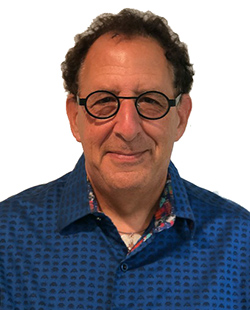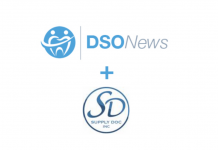I recently had the chance to sit down with Hal Muller, Global President of Henry Schein Special Markets to get his perspective on the pulse of the industry. Over the last 25 years, Hal has been an influential figure in bridging dental distributors and manufacturers with group practices.
In your opinion, what are the top four factors affecting the business of our dental industry today?
 Picking just a few major factors is hard to do as we are seeing changes in dentistry at all levels. We could fill entire articles talking about the market dynamics just since 2010.
Picking just a few major factors is hard to do as we are seeing changes in dentistry at all levels. We could fill entire articles talking about the market dynamics just since 2010.
I am going to focus my responses toward general dentistry as some of the dynamics may differ greatly for specialists. I usually talk on the consumerism of dentistry and the consolidation of the market at both the office level, as well as the supply side. However, today all dentists and companies in general dentistry need to both understand and plan for these four factors affecting the market:
- Declining insurance reimbursements
- The demographics of new dentists entering the field
- The economic uncertainty; and
- The growing number of Large Practice Groups / Dental Support Organization’s
The topic of declining insurance reimbursement is probably the largest concern in dentistry at all levels and has actually helped and hurt the growth of the DSOs.
During the early 2000’s, organizations were buying up dental offices and building locations to round out geography to assist in getting better rates from insurance providers. This was especially true with PPOs, who wanted dentists for their members to use.
The larger groups are talking about thousands of offices in the future. If, as a country, we stay where 45-50 percent of people do not go to the dentist each year — then you can do the math — there will be a lot less small group and solo offices in the future.
Coming out of the recession in 2010, many dentists started to accept PPOs and this actually slowed down the DSO movement. However, it also created an environment where all offices were making less for the same amount of work.
Dentist’s now must rethink their 4 1/2 day workweek and perform more dentistry to maintain the income for both their staff and themselves.
Readers need to understand that now that they are accepting more insurance plans, miscoding procedures may cost them money every day. Billers may not notice a slight variation to a similar code that they can submit for higher reimbursement.
Extending hours to include evenings and weekends keeps patients out of the emergency room, creates greater revenue opportunities for the practice, and is welcomed by the insurance companies.
However, the issue will always be that patients will have to reach deeper into their own pockets, or the dentist will have to work the same for less. Neither are good for increasing revenue, however, it is today’s reality.
There are solutions that dentists and groups can utilize to keep their patients coming back to complete their treatment plans. Many larger groups have set up their own discount dental plans and in-house financing.
Today, dental insurance reimbursement continues to decline. This opens the doors for insurance replacement programs such as PlanSURITY by ProCare to offer a different form of self-insured, unlimited dental plan, or Kleer, a new dental membership plan, both of which benefits the dentist and patient.
Before I leave this subject, the State of Kentucky became the latest state to exclude dental coverage in Medicaid. It is unfortunate that at the same time we are promoting that oral health is part of total health, we have payors reducing or dropping the oral health component.
In my personal life, I have been a diabetic for over 35 years and infections and inflammations drive my blood sugar wild. There are so many inflammations that can occur due to bad oral hygiene that I feel it is a crime with what payors are doing. We must stand together and fight these reductions.
Hal, you touched the demographics of people graduating dental school today. How is that affecting the market, and I would imagine the numbers are also a concern?
It is safe to say that we are now at a point that 50% of people graduating dental school are female and most are post-millennial. According to the ADA, the number of dentists continues to grow in the US, however, many counties are seeing fewer dentists coming in to replace the retiring ones. The concept of my generation where we “lived to work” has most definitely changed to people “working to live.”
You also need to understand that people joining the healthcare field are not as used to seeing a physician in a solo practice. They are used to the concept of a group practice environment.
Tying together what I just said, you can see why the graduating dentist wants to be in a group practice or a group where there are other dentists to work alongside, and who will cover hours for each other in order to “live.”
Today, I would guess that the group business has broken 20 precent market share. If interest rates stay low, then private equity money will continue to flow into the industry and I would guess that we will see annual market share gain of 2-4 percent for the foreseeable future.
How is the current economic uncertainty playing into the business of dentistry?
If we turn to the environment we live in today, I can see why people are saving money and not doing the elective procedures that are the most profitable for dentists. Yes, we vein baby boomers want and can afford nice teeth, but the majority of people still do not like going to the dentist, or they put dental care below having a nice dinner out.
We have moved away from the economic meltdown that was the Great Recession but turn on the news and after the top stories are listed, you start to wonder how quickly we can find ourselves right back in the middle of another crisis. Just look at farmers and people who work at manufacturing plants as examples from the last few months.
Hal, you have made it a point to study the consolidation of this industry. What is driving the growth of DSO’s and smaller group?
By reviewing my answers in this interview, you can get a feel for why the DSO and multi-group businesses are growing. A dentist has less to worry about being part of a larger team. If you want to start a family, you have others who can cover for you. If you want to go on an extended vacation, you have people who can cover for you. If you are drawing a salary plus a bonus, then you can relax a lot more than if 100 percent of your income is based on the payments that were made to your office this month. If you look at yourself in the mirror after graduating dental school, or after a year or two in the business and say “I really don’t know as much as I should,” then being part of a group is not a bad place to be.
The other wild dynamic right now is the amount of money that is being offered dental groups by private equity firms. This also has a trickle-down effect on the non-sponsored groups that have the money and are looking to recruit more dentists or acquire more offices for an eventual payday.
I know that there are some negative feelings about groups, especially as they get larger, but I personally feel some of those are misperceptions. I am sure that in future articles you will cover the quality of dentistry today and that managing the appointment book for a successful business is just as important in any size business.
If we look at the number of groups, I think you will find a very common pattern with what has happened in many other healthcare and non-healthcare businesses. There are a few very large groups, about twice the number doing half as much, and then a lot of players at the local level.
The larger groups are talking about thousands of offices in the future. If, as a country, we stay where 45-50 percent of people do not go to the dentist each year — then you can do the math — there will be a lot less small group and solo offices in the future.
Today, I would guess that the group business has broken 20 precent market share. If interest rates stay low, then private equity money will continue to flow into the industry and I would guess that we will see annual market share gain of 2-4 percent for the foreseeable future.
Lastly, Hal, I have heard rumors that you are retiring at the end of this year. Is that true?
Yes — and I think this interview is the first place that I am making that official. It is time for the next generation to take leadership in this changing marketplace. I plan to continue my work with the dental industry to help companies like Henry Schein and others in the dental community to best understand this challenging landscape and hopefully to help the industry to continue to grow and prosper.
Hal, as always, it has been a great pleasure speaking with you and I always enjoy an opportunity to pick your brain. Thank you for carving out some of your valuable time to speak with me on behalf of our readers.
Thank you. The pleasure was all mine.











